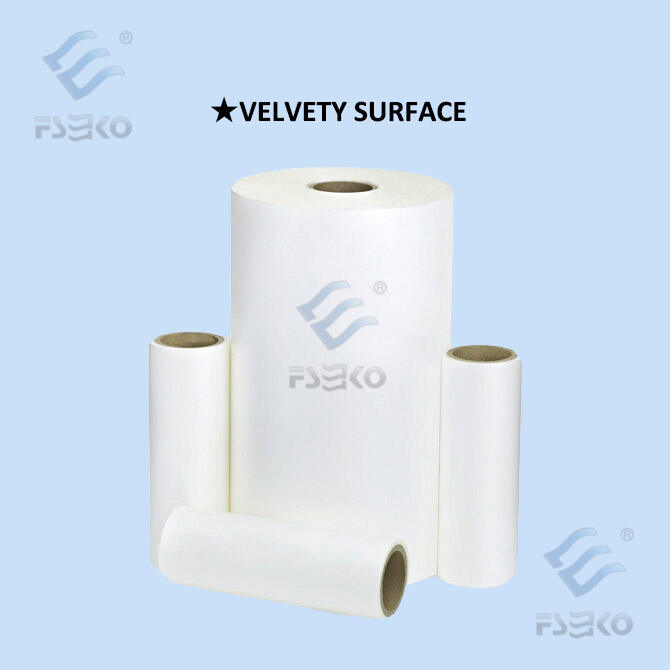Understanding Thermal Lamination Films
What Makes Thermal Lamination Film Unique?
Thermal lamination film stands out due to its heat-activated adhesive, which securely bonds layers together, offering a seamless glossy finish. This feature not only enhances the visual appeal of printed materials but also provides them with an added layer of protection. The glossy surface is particularly beneficial for product packaging, providing resistance against moisture and damage, thus maintaining the integrity of the contents. One of the key attributes of thermal lamination is its durability. Unlike other lamination methods, it delivers longevity by binding the protective film to the substrate more effectively, ensuring the laminated materials withstand wear and tear over time. This process is particularly useful for materials that require long-lasting protection and aesthetic quality.
How Thermal Lamination Differs from Wet Lamination
Thermal lamination differentiates itself from wet lamination through its use of heat rather than liquid adhesives. This reliance on heat ensures a quicker drying time, ultimately resulting in a more robust bond between the film and the substrate. The lack of delay in drying contributes to faster production processes, making it ideal for manufacturers aiming for speed without sacrificing quality. Furthermore, thermal lamination films generally offer superior moisture resistance compared to their wet lamination counterparts. This advantage makes them a preferred choice for products exposed to varying environmental conditions, protecting them from potential moisture damage. The technique’s inherent ability to withstand moisture ensures that products remain pristine, enhancing both their durability and appeal.
Key Advantages of Using Pouch Lamination Films
Enhanced Durability for Packaging
Pouch lamination films significantly boost the lifespan of packaging products by providing robust protection against physical damage. This heightened durability leads to increased user satisfaction, as customer studies reveal that products with pouch lamination have higher retention rates. Scratch and tear resistance, inherent features of these films, further extend the shelf life for packaged goods, ensuring they remain appealing and intact for longer periods. By maintaining the integrity of packaging, pouch laminations contribute to prolonged usability and enhanced customer experience.
Moisture and Scratch Resistance Benefits
Pouch lamination films offer an effective barrier against moisture, safeguarding the contents and prolonging their integrity. Research indicates that laminated materials are less susceptible to damage caused by environmental factors. The scratch-resistant properties of pouch lamination films are vital for retail displays, adding a protective layer that prevents unsightly blemishes. This combination of moisture and scratch resistance ensures that products not only maintain their appearance but also enjoy a longer life, proving crucial for maintaining brand quality in consumer markets.
Superior Optics and Print Compatibility
Laminated surfaces offer a vibrant sheen, greatly enhancing printed colors and graphics. This vibrant finish can optimize designs by ensuring compatibility with various printing technologies, thus maximizing visual marketing outcomes. Superior optics contribute significantly to better consumer engagement by attracting attention and conveying quality. Moreover, the enhanced visuals of laminated prints serve as a powerful tool in marketing campaigns, reinforcing brand messaging and boosting appeal to attract more customers.
BOPP vs PET Films: Material Comparison
Tensile Strength Differences
When comparing BOPP (Biaxially Oriented Polypropylene) and PET (Polyethylene Terephthalate) films, tensile strength is a significant factor. BOPP films are renowned for their high tensile strength, making them highly suitable for flexible packaging applications. This strength allows BOPP films to handle physical stress and stretching, providing durability for everyday products. In contrast, PET films are recognized for their robustness and are typically used in applications where more rigorous performance is required, such as in high-end packaging and industrial uses. While BOPP films offer versatility for daily products, PET films cater to high-end and heavy-duty packaging needs due to their superior tensile characteristics.
Heat Resistance Properties
Heat resistance is another key difference between BOPP and PET films. PET films generally withstand higher temperatures than BOPP films, which makes them ideal for applications involving exposure to extreme heat. This heat resistance is crucial for packaging that undergoes thermal processes, ensuring the contents remain unaffected despite temperature fluctuations. Statistical evidence indicates that PET’s superior heat resistance not only protects the integrity of the package contents but also extends the lifespan of the packaging materials. This makes PET films preferable in scenarios demanding enduring packaging solutions that can withstand challenging environmental conditions.
Recyclability Factors
In terms of recyclability, both BOPP and PET films present unique characteristics. BOPP films are considered more biodegradable than PET films, positioning themselves as a more eco-friendly choice for sustainability-focused businesses. However, PET films often integrate better with recycling initiatives in many regions. They align well with circular economy models, supporting efficient recycling processes. Consequently, choosing between BOPP and PET films necessitates considering local recycling capabilities and environmental priorities to ensure the most sustainable and efficient packaging solution.
Specialty Film Applications
Anti-Scratch Films for High-Traffic Packaging
Anti-scratch films are crucial for products that undergo frequent handling or are displayed in high-traffic areas. These films protect the surface of packages, maintaining their visual clarity and integrity through rigorous use. Retail and logistics sectors prioritize these films to ensure that products remain attractive and unmarred, thus influencing consumer choices positively. According to consumer feedback, packaging with anti-scratch protection is highly preferred as it sustains its aesthetic appeal despite regular handling.
Soft Touch Lamination in Premium Branding
Soft touch lamination presents a velvety texture, enhancing the tactile experience and elevating the perception of luxury in premium products. This type of lamination is increasingly used in the branding of high-end products, as it significantly boosts customer perception and product appeal. According to market research, soft touch lamination not only contributes to a premium look but also results in higher engagement rates for promotional materials during marketing campaigns. Its unique feel differentiates products in crowded marketplaces, making them more desirable to consumers.
Printing on Laminated Surfaces
Printing on laminated surfaces requires specialized inks and techniques to ensure that prints are vibrant and adhere well. Proper printing methods can achieve high-definition results that resist fading, even with extended use. Recent innovations have enhanced the capabilities of printing on laminated materials, allowing for clear, sharp prints that maintain their quality over time. This technological advancement opens up new possibilities in design and customization, providing businesses with more options to create standout printed materials.
Selecting the Right Film for Your Needs
Matching Film Properties to Product Requirements
Selecting the right film for your product begins with a clear understanding of its specific needs, such as durability, appearance, and application method. By aligning film properties with user expectations and industry standards, businesses can significantly enhance product satisfaction. For instance, the food and beverage industry often benefits from laminating films that add aesthetic appeal and ensure freshness. Similarly, the pharmaceutical sector prioritizes tamper-evident and heat-sealable films. Connecting with the requirements specific to your industry allows for tailored film selections that boost performance and customer approval.
Environmental Considerations in Film Selection
As environmental sustainability becomes increasingly crucial, evaluating eco-friendly film options is a necessary part of the decision-making process. Industry leaders are now prioritizing recycled, recyclable, and biodegradable films to minimize environmental impact. For example, companies like Ecoplast Ltd are innovating with sustainable PE films, demonstrating a tangible shift towards greener practices. Data on film production's environmental impact reveals that investing in sustainable options can significantly reduce carbon footprints and contribute to a healthier planet.
Cost vs Performance Analysis
Conducting a comprehensive cost-benefit analysis helps determine the film that offers optimal value for your application. While initial investment in high-quality films may seem costly, market trends suggest long-term savings through enhanced durability and fewer replacements. For instance, thermal lamination films, like those offered by Ultralen, are renowned for their durability, providing a compelling case for their reputation in the industry. Successful case studies further illustrate how businesses have achieved reduced costs and extended product lifespan by prioritizing performance in film selections.


